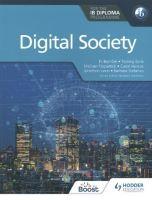

BLOGS > MARCH 27, 2023
BY BARBARA STEFANICS


One of the major dilemmas that has surfaced since the release of the Digital Society Guide and the publishing of our Digital Society coursebook is how to organize the topics and teach the learning activities and assessments in a well-organized course of study.
There are many dimensions that need to be considered. The first consideration relates to whether the class consists of:
All these possibilities contribute to a unique course outline.
The next challenge is organizing the sequence and depth of discussion of the three Cs: Concepts, Content, and Contexts. The course should be introduced through the Digital Society framework and by using simple inquiries and real-world examples that include digital technologies familiar to the students. Section 1: Understanding Digital Society and Section 2: Concepts from the Digital Society textbook demonstrate this approach and are aligned with the Digital Society Guide.
Next, students need an understanding of the various digital technologies (Section 3: Content) and need to investigate relevant real-world examples and the impacts of those digital technologies on individuals and communities. This is covered in more depth here than in Section 2: Concepts, and each topic in Section 3: Content relates to specific contexts and concepts. The digital technologies should not be studied in isolation.
At this point, Section 4: Contexts allows for the study of seven topic areas in any order. Each topic includes real-world examples that integrate Context, Content, and Concepts and ensures that all aspects of the Digital Society framework have been addressed. If the class consists of SL and HL students, the order of the topics for the SL/HL Core may need to be aligned with topics in Section 5 of HL Extension: Challenges and Interventions.
After the basic course outline is determined, it will need to be further developed by considering:
The Digital Society coursebook is organized so that topics from the various sections can be considered sequentially or integrated as needed in the course outline.
Here is my sample course outline for consideration. You might find it useful.
In considering the course outline, you need to remember to indicate:
I look forward to us collaborating and sharing our course outlines with the network of Digital Society educators!

Barbara Stefanics
Barbara Stefanics is an IB teacher, examiner, workshop leader, DP consultant and course reviewer, and a DS and technology faculty member for My IB.
5 Features I LOVE About The NEW Destiny Version 21.0!
May 8, 2024
I am so excited about the NEW Destiny Version 21.0! The new Destiny version is loaded with so many amazing updates and new additions. We are having a great time getting to know it in our library and today, I want to...
Read more
Enable The NEW Destiny User Experience, Today!
May 8, 2024
Last week, I posted about 5 features I LOVE in the new Destiny Version 21.0. You can read this post here.Since that post, and at the TLA Conference last week, a lot of you have asked me how to get...
Read more
May 8, 2024
As we get close to the end of the school year, we start to think about processes that keep our library collection current, fresh and ready for new books and resources. Weeding is where I like to start! Weeding is the process...
Read more
Discover best-selling Spanish SEL-oriented picture books!
April 23, 2024
Explore the exciting selection of stand-alone titles and series from Vista Higher Learning where students meet diverse characters and connect with engaging stories! These titles feature vibrant illustrations that bring stories to life and are essential for Spanish-language comprehension. From...
Read more
Classroom Libraries Part 1: Organizing & Designing Your Classroom Library
April 12, 2024
We all know that books are essential for learning, and as educators we buy them, collect them, receive them, but then what? We have some great and not-so-great books in our classrooms, and it’s hard to decide what goes into...
Read more
The Top 5 Strategies for Cost-Effective IT Management in K-12 Schools and Districts
April 9, 2024
Introduction IT management has become much more than just keeping the lights on in the computer lab. It's about creating an environment where technology enhances learning without breaking the bank. Let's dive into the top five strategies that will not only save you pennies but...
Read more